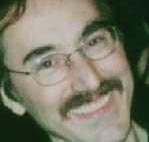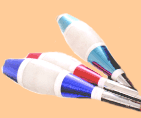 |
Jim
Kerr - Alaska Juggler |
 |
| Man of Technology |
| |
PC Fundamentals |
|
Juggling
|
I.
Mousing and clicking and clacking B. Most explorer windows have navigation buttons. 1. Back
2. Forward
3. Up
4. Search
5. Folders
6. Views
7. Missing? Go to View- Toolbars - Standard Buttons. C. What does the address bar mean? 1. Location!
Location! Location! 2. Address bar tells Which drive you are on, which folder, and what subfolders. 3. Displayed left to right. C: \ Program Files \ Dell 4. Missing? Go to View- Toolbars - Address Bar.. D. Keyboard Shorcuts 1. All menu items can be launched by Alt + Underlined letter. Example is Alt + F to get to the File menu. Arrow keys and Enter to navigate 2. Other useful Navigation Shortcuts 1. ALT+TAB switches between open application windows. 2. ALT+ESC will cycle through those items in the order they were opened 3. ALT+F4 close the active item, or quit the active program II. Clipboard tricks A. From the Drop Down Menus 1. Edit -> Copy 2. Edit -> Cut 3. Edit -> Paste (don't forget to explore paste/special when available) B. From the Keyboard Method. Universal Windows functions are Ctrl + <some letter> 1. Copy - Ctrl + C 2. Cut - Ctrl + X 3. Paste - Ctrl + V 4. Undo - Ctrl + Z 5. Delete - Del 6. Permanent Delete - Shift + Delete 7. More Useful Keyboard Shortcuts on the Hints and Tricks Page. C. Drag and Drop. 1. It is Contextual so be aware of where you are moving from and to. 2. On the local drive it moves the file or folder. 3. Between networked drives it copies the file; so C: to M: would copy it, not move it. D. Right Click Method. Same options at the Menu Method. Cut, copy, paste. 1. Bonus Method - Send To. E. Please note that many of these functions (almost all of them) work in any Windows aware/compliant application such as Word, Excel, Powerpoint, Mozilla, etc. F. Naming Conventions- what is in an extension? 1. Standard
filename format is “filename.ext” with the filename being limited
to 256 characters for filename and its path. Remember that
path includes things like 2.. Windows uses extensions to determine the appropriate program to open the file. The difference between .dot and .doc may not seem like much, but one is Word Template and one is a Word Document and they open differently. 3. Avoid Special Characters in file names. * . ( ) \ $ are right out. 4. If you must use a separator use the dash. III. My Computer, and the File Explorer A. In previous versions of Windows My computer and Explorer were separate. B. In Windows XP they are the same program, Explorer just has the Folders tab toggled on. 1. Win + E to launch Windows Explorer 2. Win + F will start the Windows Search 3. Win + R to open the Run Program function. C. Explorer Features -Or Getting more information then you want. 1. Remember
the View button? 2. Switches between 5 modes. Thumbnails, Tiles, Icon, List and Details. 3. All of them but Details mode have standard settings. 4. Details is completely customizable with the information you want to see. 5. Right-clicking on the Detail bar at the top lists many display options. Note that there is the more button, giving you more possible option then you will ever use. 6. The
files can be sorted by any of the chosen details either ascending
D. Some folders are more special then others. 1. My Pictures - Defaults to Thumbnail mode 2. My Videoes - Defaults to Thumbnail mode 3. My Music - Defaults to Thumbnail mode E. All folders can be set to display the exact same view by default. 1. Open any folder, change to the view mode yo preferl. 2. On the folder menu click on Tools-> Folder Options. 3. Click on the View tab. 4. Uncheck “Remember each folder’s view settings” 5. Click on Apply to all folders. And the click on Ok. 6. While you’re there make sure “Hide Extensions of known type” is unchecked F. To create new folders there are three methods. 1. Menu Method - click on File -> New -> Folder 2. Right-Click Method - Right click anywhere in empty space and choose New -> Folder (note: this does not work if you click into folder window when you have the folder bar open) 3. If the System Task pane is active (instead of Folder view) you can expand the File and Folder Tasks and choose create new folder. IV. Desktop and Start Bar trick. A. All the keyboard shortcuts and rightclick goodness you’ve learned still apply with some added features. B. On the Desktop Right-Click -> Properties takes you directly to the System Display Control Panel. 1. Once there you can adjust resolution, screensavers, wallpapers, etc. 2. Besides adjusting the Resolution don’t touch anything on the Settings tab. Please. C. Likewise there are wealth of hidden features buried in the Start bar. 1. Quick Launch - Always have access to your apps. 2. Language Bar - Feeling multi-lingual? 3. Many More… including Making your own! D. It can also be customized to suit you preferences. Right click on the Start Button and choose Properties. 1. Miss the old Windows 95 style interface? Choose Classic mode 2. Want smaller Icons? Click on the customize button. E. Too many icons in your start menu? Right-click on the Start Menu and Choose Explore. It’s another Folder! Double Click on Programs and… 1. Make
folders that work for you, such as: 2. Next drag icons and folders into those folders. 3. Delete application you never use. By doing this you are only deleting the icons. To really delete the programs you must go to the Control Panel. V. Control Panel - Most useful items: 1. Add/Remove Programs - here is a great place to rid yourself of useless programs. 2. Mouse controls. 3. Audio Controls 4. Administrative Services - especially services VI. Local Drives verses Mapped drives A. Local Drives are physically attached to your computer. They are what you see when you click my computer from the desktop 1. C: 2. CD 3. DVD 4. Removable Drive/Thumbdrive/MemoryCard B. Mapped Drives are connected via the network - eg. P: or Q: for network drives. They typically have letters that are closer to Z than A.
|
Juggling | Resume' | Diversions | Gravity | Music | About Jim | Contact Jim | Site Map
Home